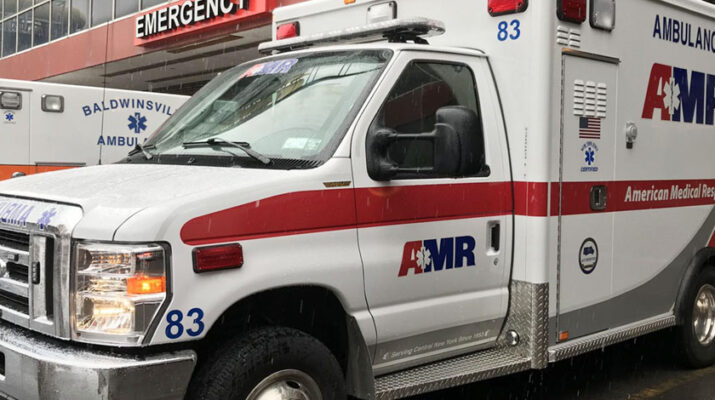By Payne Horning
As coronavirus cases continue to spread throughout the state, it’s the ambulance providers who are calling for help.
The pandemic, which is nearing the one-year mark in the United States, is straining EMS finances to what those in the industry say is a dangerous level.
Lon Fricano, director of operations at TLC EMS, an ambulance provider that serves Cayuga, Onondaga and Cortland counties, says every year is tough in EMS. In fact, he says there’s a saying for it: it’s the toughest job you’ll ever love. But this year is something else entirely.
“The pandemic has doubled down on the difficulties,” Fricano said. “It’s very hard, very difficult. We have to run a very tight ship, watch every penny, and be conservative in what we spend money on.”
Yet, costs are going up regardless of what Fricano or his colleagues do. The pandemic has necessitated a stockpile of safety equipment like gloves and facemasks for both staff and patients who are transported. There’s also a need for some items you wouldn’t even think of — like an ‘ozone device’ that disinfects and sanitizes an ambulance for about an hour after a patient is delivered. The main financial cost, though, is coming from the calls themselves.
Ambulance providers for years have lamented the reimbursement rates offered by the federal and state government for Medicare and Medicaid patients, but Jeff Endler with the United New York Ambulance Network said this insufficient funding can be most directly pinned to the issues the industry is experiencing now. A 2017 study by the New York State Department of Health found that ambulance services are underfunded to the tune of about $31.4 million. The problem is not only persisting this year, it’s gotten worse as more of these calls have come in.
“This has taken place all while ambulance services have provided an effective backstop against overwhelming hospital systems by treating and releasing patients with low medical complaints on the spot,” Endler said. “Yet the industry has been woefully undercompensated for these efforts, adding to the strain.”
Endler is referring to the treat and release initiative. In the wake of major patient surges in state hospitals, EMS workers have been asked to care for patients at their homes where possible. The goal is to cut down on traffic at hospitals, especially from those with COVID-19. Patients are thus treated at their homes unless there is a pressing need to take them to the emergency room. The trouble is that these services are going unpaid.
“In ambulance industry, you’re only compensated for transporting a patient — wheels have to be turning in order to get paid,” Fricano said. “So, all of that is a service we provide that is absolutely uncompensated.”
This is despite the fact that EMS workers are expending time, resources, and manpower to respond to these calls. It’s why Fricano, Endler, and others in the industry are calling upon government leaders to respond with funding and support.
The industry got $350 million from Congress earlier this year. In mid-December, the Department of Health and Human Services released more than $1 billion in further assistance. Fricano and Endler say it’s this kind of assistance EMS workers need and that must be continued as the pandemic continues, otherwise, some ambulance providers could go under.
“We always face some dangers in EMS, but today every single call we go on represents a potential danger to our providers and their families, so the level of stress people are under is enormous and yet these folks show up for work every day and they walk into the valley of death, if you will, and face the consequences of taking care of very sick people and they do it every day,” Fricano said. “We wish we could compensate them better for their work.”

